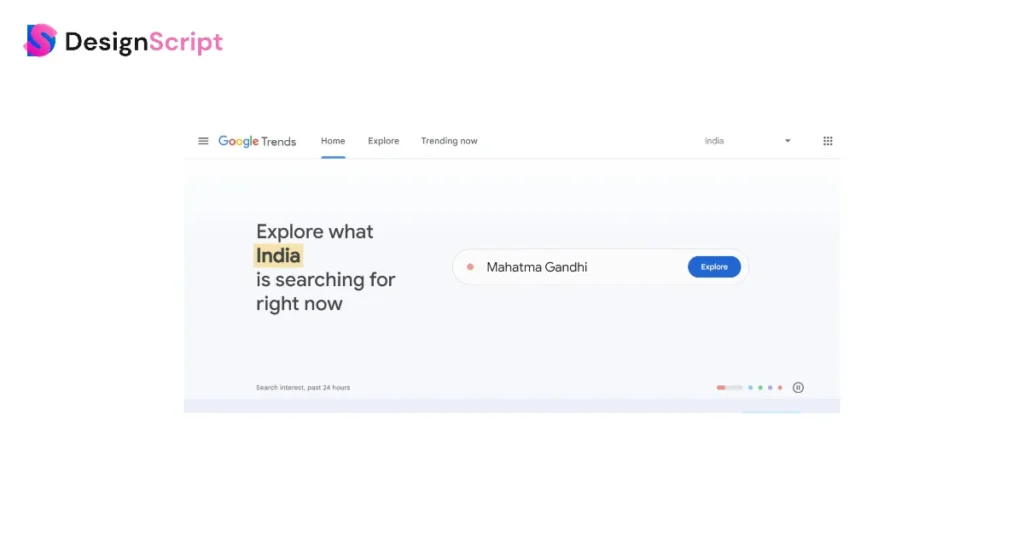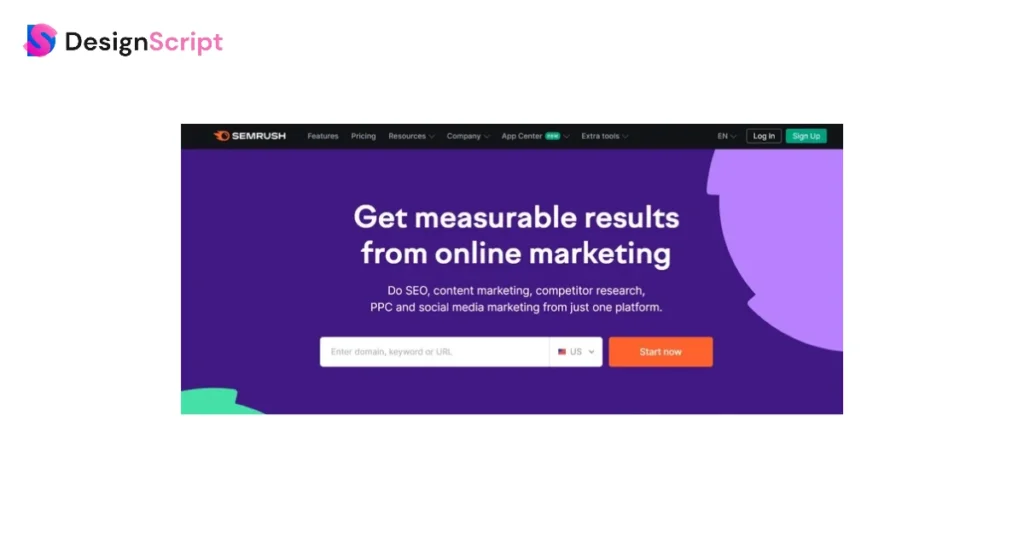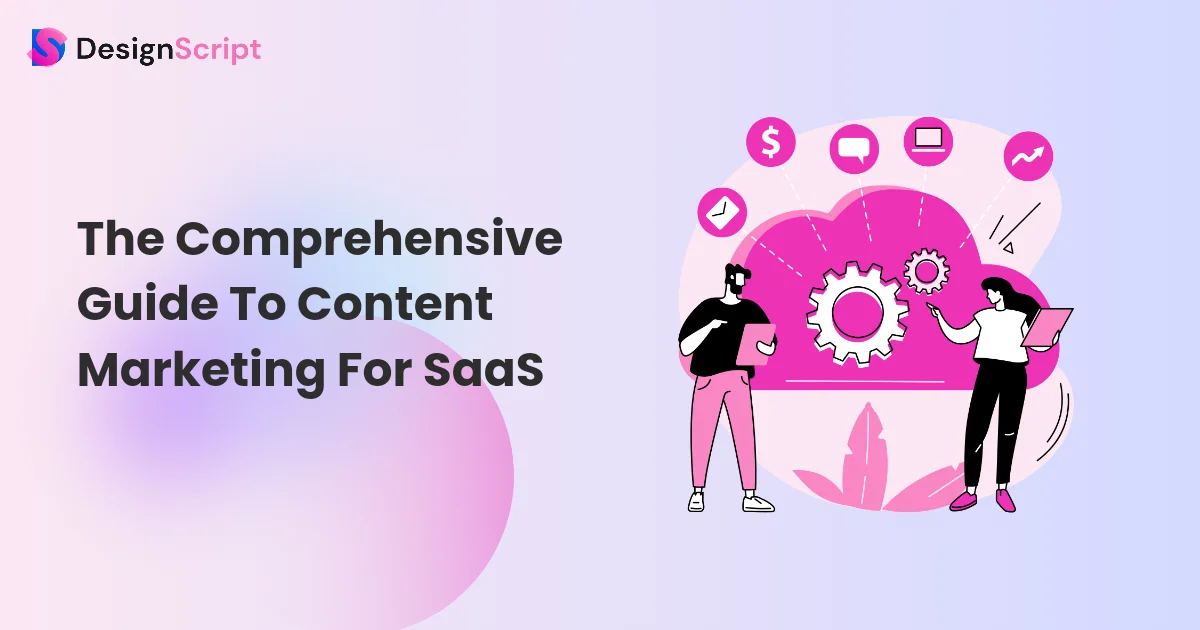The Comprehensive Guide To Content Marketing For SaaS
It may surprise you that SaaS companies that use content marketing claim 400% growth in lead creation. Furthermore, 97% of SaaS companies report success with their content marketing initiatives. It can seem tough to break through the noise in the competitive SaaS industry, where attention spans are short and inboxes are full.
But fear not, warriors! Content marketing SaaS is like your secret weapon. It helps bring in leads, nurtures prospects, and turns them into loyal customers. Craft compelling content that resonates with your target audience. Fuel your sales funnel. That’s where things get tricky. Our detailed guide is helpful. It guides you through the dynamic field of SaaS content marketing.
We’ll delve deep into the secrets of understanding your audience, recognize their pain points, and crafting content that speaks to their needs. And we’ll equip you with proven strategies for distribution and promotion, ensuring your content finds the right eye.
So, buckle up! This guide is your key to unlocking the full potential of content marketing and taking your SaaS business to new heights.
Let’s dive in!
Table of Content
- What Is SaaS Content Marketing?
- What Is Different about SaaS Content Marketing?
- Why Is Content Marketing Crucial For SaaS Companies?
- How Can You Develop an Effective Content Marketing For SaaS Plan?
- 1. Define your content marketing goals
- 2. Define Your Target Audience
- 3. Identify Pain Points
- 4. Identify Relevant Keywords
- 5. Get your product and brand story right
- 6. Prepare all necessary marketing assets
- 7. Become an Expert in Your Field and Know Your Product well
- 8. Change the “Problem-Solution” Mentality and Think Big
- 9. Strengthen Your Thought Leadership
- 10. Build Authority
- 11. Build an Effective Content Marketing Funnel
- 12. Design Content Workflows that Nurture Leads
- 13. Focus on Quality, Not Quantity
- 14. Work Out Your Promotion and Distribution Strategy
- Tools For Content Marketing For SaaS
- Future Trends in SaaS Content Marketing: AI and Automation
- Your Guide to SaaS Content Marketing Mastery
- FAQs
What Is SaaS Content Marketing?
Imagine your ideal customer stumbles upon an article that solves their nagging pain point, written by a brand that clearly understands their industry. They devour the content, eager to learn more, and by the end, they see your SaaS solution as the perfect answer. That’s the magic of content marketing for SaaS.
It’s not just about creating brochures in disguise. It’s about crafting valuable, informative content that attracts potential customers, educates them about your industry and product, and ultimately convinces them to try it out. It’s about building trust, establishing your brand as a thought leader, and becoming a go-to resource for your target audience.
Think of it as a slow burn, not a quick sale. By consistently providing high-quality content, you nurture leads, answer their questions, and build relationships that convert into loyal customers. So, ditch the hard sell and embrace the power of attraction. Welcome to the world of content marketing for SaaS.
What Is Different about SaaS Content Marketing?

SaaS content marketing is a different ball game than its more traditional counterparts. Here’s why:
Think laser-focused: Forget the broad net approach. You’re targeting businesses with specific needs, so your content needs to be like a heat-seeking missile, honing in on their industry, technical challenges, and unique language.
Decision-making marathon: Unlike impulse buys, SaaS purchases often involve multiple people with different priorities. Your content must be an endurance runner, educating, building trust, and convincing each decision-maker.
Content buffet, not just a burger: Blog posts and infographics are great starters, but the real feast comes with case studies, white papers, webinars, and product demos. These showcase your expertise, value, and social proof, making your offering stand out.
Metrics that matter: Forget likes and shares. Track the real ROI: qualified leads, demo signups, customer acquisition costs, and churn rate. These tell you if your content brings valuable customers who stick around.
Your content should not only promote features. It should also teach, show the worth you offer, and create connections. This, in turn, brings back customers who stay with you for a long time. Understand key differences to craft a SaaS content marketing strategy. It attracts the right audience, speaks their language, and fuels growth.
Why Is Content Marketing Crucial For SaaS Companies?

SaaS companies need a powerful edge in a world saturated with software options. Enter content marketing: your secret weapon for attracting, engaging, and converting customers. Here’s why it’s essential:
1. Education & Trust
SaaS solutions often tackle complex problems. Content, like blog posts, guides, and webinars, educates potential customers, demystifies your product, and positions you as an industry thought leader. They are more inclined to choose you as a result of the trust you create.
2. Lead Generation & Nurturing
Valuable content attracts visitors who are genuinely interested in your solution. By offering downloadable resources, gated content, or email newsletters, you capture leads and nurture them through the sales funnel with targeted content that addresses their needs.
3. Customer Acquisition & Retention
Content marketing isn’t just about acquiring new customers. Educational content empowers existing users, reduces churn, and fosters loyalty. FAQs, troubleshooting guides, and product updates keep them engaged and returning for more.
4. Organic Reach & Brand Awareness
Great content gets shared! Social media engagement, organic search ranking, and backlinks all amplify your brand voice and reach a huge audience, increasing brand awareness and attracting new leads organically.
5. Cost-Effective & Measurable
Content marketing is cheaper than traditional marketing. It helps you reach more people. Track key metrics: website traffic, lead generation, conversions to measure ROI efficiently. Optimize strategy for better results.
How Can You Develop an Effective Content Marketing For SaaS Plan?
In the competitive SaaS landscape, content marketing SaaS reigns supreme. However, crafting a powerful strategy requires more than just churning out blog posts. Know about the necessary steps to build a content engine that drives leads, conversions, and brand loyalty.
1. Define your content marketing goals

Start by setting clear, measurable goals aligned with your overall business objectives. Do you aim to raise brand awareness, generate leads, or boost product adoption? Be specific and track your progress to ensure your content efforts are on target.
2. Define Your Target Audience

Imagine throwing a party and inviting everyone. It wouldn’t be much fun. Similarly, generic content will only resonate with some. Instead, define your ideal customer profile – their demographics, pain points, and online behavior. This laser focus ensures your content speaks directly to their needs and interests.
3. Identify Pain Points

What keeps your target audience up at night? What industry challenges do they face? Become a master listener and delve deep into their problems. This understanding fuels your content creation, ensuring it offers solutions and positions your SaaS as the answer they desperately seek.
4. Identify Relevant Keywords

Imagine searching for “best shoes” and landing on a page about rocket science. It will seem weird. That’s why you have to conduct keyword research to understand your audience’s terms when searching for solutions like yours. This makes sure your content ranks high in search results, attracting the right eye.
5. Get your product and brand story right

Your SaaS isn’t just software; it’s a story. Craft a compelling narrative that showcases its value proposition, mission, and unique benefits. This story should resonate with your audience, building an emotional connection and loyalty beyond mere functionality.
6. Prepare all necessary marketing assets

Visuals, case studies, and white papers are the tools you use in content marketing. Plan and create diverse assets that support your content strategy and cater to different customer journey stages.
7. Become an Expert in Your Field and Know Your Product well

Become the go-to source of knowledge in your field. Immerse yourself in industry trends, research, and data. This expertise shines through your content, establishing you as a thought leader and building trust with possible customers.
8. Change the “Problem-Solution” Mentality and Think Big

Don’t just offer solutions; challenge the status quo and spark industry conversations. Participate in relevant debates, share unique insights, and push the boundaries of your field. This positions you as an innovator and attracts a forward-thinking audience.
9. Strengthen Your Thought Leadership

Don’t just say it, prove it. Contribute to industry publications, participate in conferences, and actively engage in online discussions. Building thought leadership positions you as an authority, attracting valuable partnerships and increasing brand visibility.
10. Build Authority

Showcase your expertise through testimonials, case studies, and client success stories—partner with industry influencers and media outlets to gain further credibility. Remember, trust is the base of any successful business relationship.
11. Build an Effective Content Marketing Funnel

Imagine a leaky pipe. Your content funnel should be different! Craft a seamless content journey that guides potential customers from awareness to conversion. This includes blog posts, webinars, demos, and nurturing email sequences tailored to each stage.
12. Design Content Workflows that Nurture Leads

Keep leads even after the initial interaction. Design automated email sequences and targeted content that educate, engage, and move them closer to conversion. Remember, nurturing leads is key to maximizing your content marketing ROI.
13. Focus on Quality, Not Quantity

Churning out content quickly is tempting, but remember, quality matters more than quantity. Invest in well-researched and engaging content that truly adds value to your audience’s lives. This builds trust and ultimately leads to conversions.
14. Work Out Your Promotion and Distribution Strategy

Your amazing content will only reach people if hidden in a digital vault. Develop a comprehensive distribution strategy that leverages social media, email marketing, influencer partnerships, and industry forums to reach your target audience where they are.
Following these steps and continuously refining your approach, build a powerful SaaS content marketing strategy that attracts leads, drives conversions, and fuels your business growth. Be patient, stay focused on your audience, and watch your SaaS soar to new heights.
Tools For Content Marketing For SaaS
Crafting stellar content for your SaaS business requires the right tools. Let’s delve deeper into each tool and explore their specific benefits for you:
1. Google Analytics

Think of Google Analytics as your free website performance crystal ball. This tool empowers you to understand your audience like never before. Track website traffic, analyze user behavior, and measure how your content resonates. Identify which pages engage visitors most, pinpoint areas for improvement, and track the return on investment of your content marketing SaaS efforts. You can optimize your content with data-driven insights for better engagement and conversions.
2. HubSpot

HubSpot acts as your content marketing command center, streamlining your entire workflow. Craft blog posts, landing pages, and email campaigns with ease, leveraging SEO tools to optimize them for search engines. Track social media performance and nurture leads seamlessly using automated workflows. Whether you’re a solopreneur or part of a large team, HubSpot offers a free plan and tiered paid options to fit your needs.
3. Google trends

Imagine creating content nobody searches for. Not ideal, right? Google Trends helps by showing popular topics and keywords in your field. Discover what sparks your audience’s curiosity and tailor your content accordingly. This keeps your content relevant. It brings valuable search traffic and establishes you as a thought leader.
4. Ahrefs

Imagine having a transparent window into your competitors’ SEO strategies. Ahrefs provides a robust set of features tailored for SEO. It helps you understand your competitors’ SEO strategies. Discover your competitors’ backlink profiles. You’ll see how they build links and find chances for you to use. Track your backlinks, ensuring their quality and identifying potential spam issues. Find popular, less competitive words related to your field. This helps you get more real visitors to your site. Gauge the difficulty of different keywords to focus on your content efforts effectively. Identify on-page SEO issues hindering your website’s performance. Study your competitors’ best content to learn from their formats, topics, and strategies. Track how many people find your content through search engines and social media. This data will guide you in enhancing your strategy.
5. Semrush

Semrush is a treasure trove of data and insights with unique strengths. Uncover your competitors’ most popular keywords, top-performing content, and paid advertising strategies. Gain valuable insights into their audience demographics and content gaps you can fill. Discover high-volume, low-competition keywords aligned with your target audience. Track your website’s ranking for targeted keywords over time, measuring the impact of your SEO efforts. Craft high-quality content with Semrush’s topic research tool, identifying trending topics and related questions your audience has. Use its on-page SEO checker to optimize the content you already have for search engines.
6. BuzzSumo

Have you ever wondered what kind of content ignites social media firestorms? BuzzSumo unveils the most shared and popular content within your niche. Discover trending topics, identify high-performing formats, and gain inspiration for your content creation. Leverage this knowledge to craft content that sparks engagement, gets shared widely, and expands your reach.
7. Trello

Imagine your content creation process resembling a tangled ball of yarn. Not fun. Trello brings order to the chaos. Organize your content calendar, assign tasks to team members, track deadlines, and visualize your content workflow from brainstorming to publication. Trello offers a free plan for individual users and teams, with paid options featuring extended functionalities.
Remember, tools are like spices in your marketing kitchen. Experiment with them creatively, keep checking how well they boost your content. Create compelling content with the right tools and a plan. Capture hearts, minds, and leads to elevate your SaaS business.
Future Trends in SaaS Content Marketing: AI and Automation
The SaaS content marketing world is at the edge of change due to advancing AI and automation. These technologies can change how content is made, shared, and studied. They push us to a future with smarter, more customized, and more effective content.
1. Content Creation and Optimization Tools
AI can write blogs, make social media posts, and create personalized emails. With advanced AI tools, this isn’t science fiction. It’s the near future. These tools will study lots of data to find trends, know your audience, and copy your writing style. This helps them make content that really connects with your target market.
2. Predictive Analytics
No more guessing what content will hit the mark. Predictive analytics uses AI to analyze performance, behavior, and trends for predictions. It helps determine successful content formats, topics, and keywords. Enhance your content strategy for optimal impact with this data-driven method. Strengthen your content strategy for optimal impact using this data-driven method.
3. Human Oversight in AI-Generated Content
AI can help make content, but human creativity is still important. AI-generated content viewed as a powerful tool, not replacing human expertise. The future lies in blending AI’s efficiency with human creativity and oversight. This ensures content is informative, engaging, ethical, and fits your brand voice.
AI and automation in content marketing for SaaS offer opportunities to streamline workflows. They also personalize experiences and achieve better results. Strategically use these technologies to future-proof your content strategy. Ensure your SaaS business thrives in the digital landscape. Remember, finding the right balance between AI’s abilities and human creativity is crucial. In the future, technology should enhance creativity, not replace it.
Your Guide to SaaS Content Marketing Mastery
This thorough guide gives you the skills and resources necessary to create an effective SaaS content marketing plan. Remember, it’s not about a quick sale but building trust and attracting loyal customers. Focus on understanding your audience and their pain points, and convert your content to their needs. Utilize the power of storytelling, industry expertise, and diverse content formats.
Embrace the strategic use of tools and stay ahead of the curve with AI and automation. By consistently creating high-quality, valuable content, you’ll attract leads, nurture prospects, and propel your content marketing for SaaS business to new heights.
So, what are you waiting for? Start crafting your content marketing for SaaS masterpiece today and watch your SaaS business flourish! Also, don’t forget to thank us later!
FAQs
Content attracts potential customers by educating them about your industry and product, building trust, and nurturing leads through the sales funnel. This leads to more qualified leads, sales, and loyal customers.
HubSpot’s blog is a stellar example. They offer valuable insights, guides, and templates that resonate with their target audience of marketers. This attracts potential customers and eventually converts them into paying users.
It’s cost-effective compared to traditional marketing, builds brand awareness organically through search and social media, and nurtures leads without relying solely on ads, ultimately driving growth.

